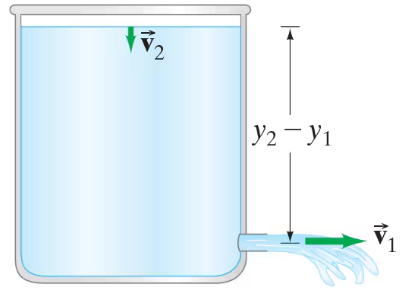A drinking fountain shoots water about 12 cm up in the air from a nozzle of diameter 0.60 cm (Fig. 13–67). The pump at the base of the unit (1.1 m below the nozzle) pushes water into a 1.2-cm-diameter supply pipe that goes up to the nozzle. What gauge pressure does the pump have to provide? Ignore the viscosity; your answer will therefore be an underestimate.
<IMAGE>







